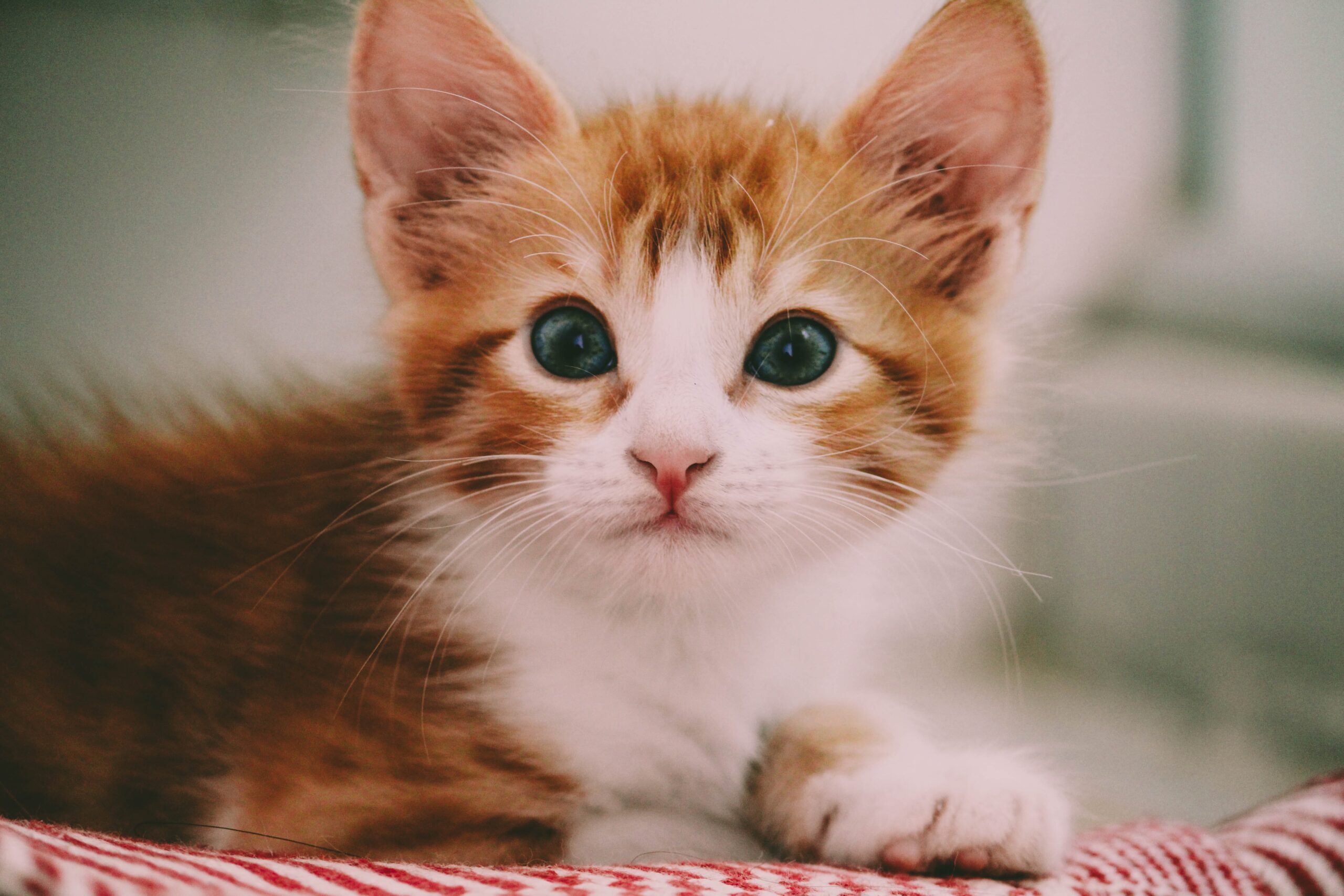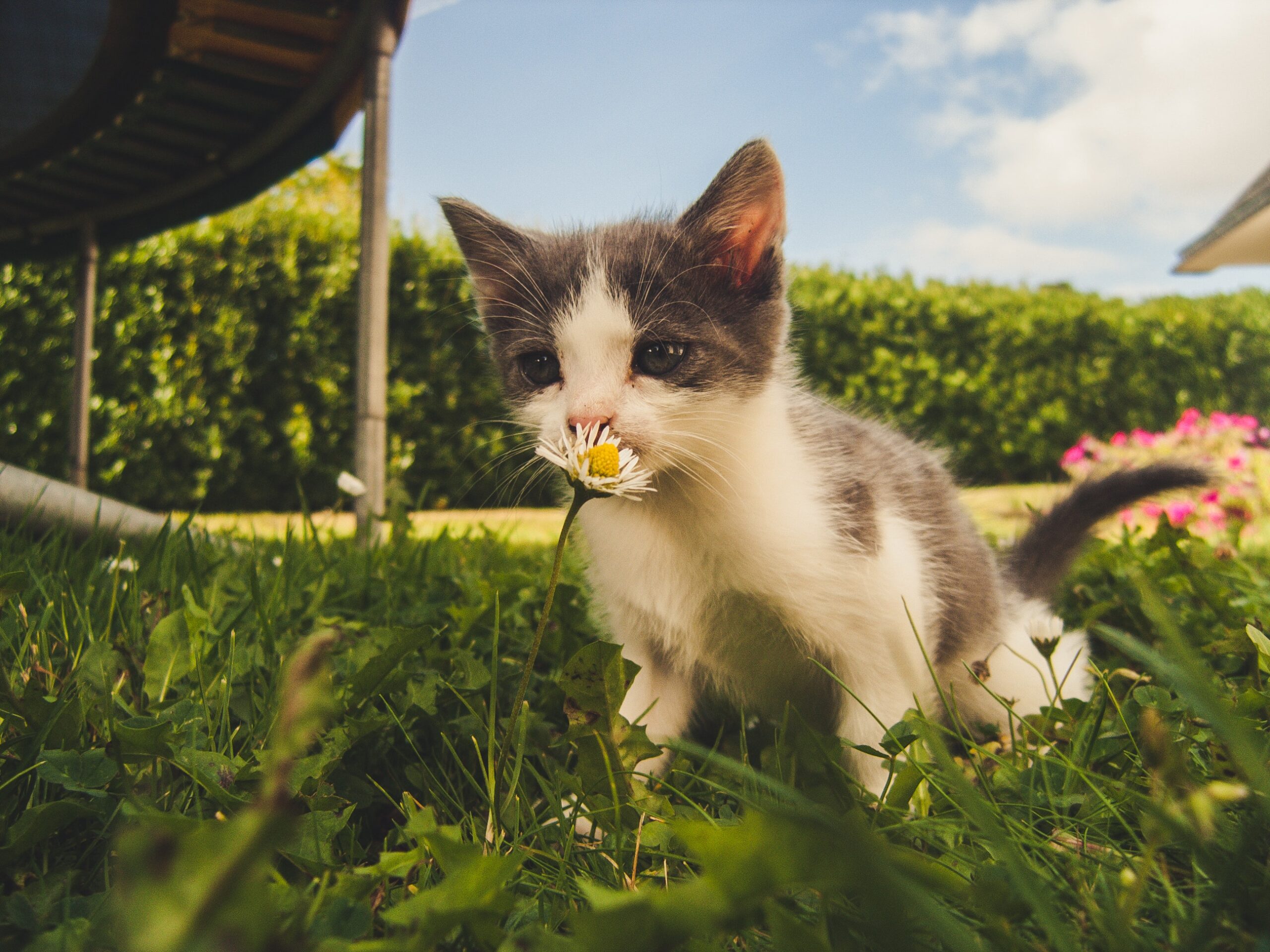Briefly introduce the topic of playtime with kittens
Welcoming a new kitten into your home is an exciting and heartwarming experience. As you watch your furry companion explore their new environment, you’ll quickly notice their innate curiosity and playful nature. Playtime is not just a source of joy for kittens; it is a vital aspect of their overall growth and development. Understanding the importance of play and actively engaging in playtime with your kitten will not only enrich their lives but also strengthen the bond between you and your feline friend.
Highlight the significance of play in a kitten’s development
Play is an integral part of a kitten’s early life stages, and it serves multiple essential purposes. Through play, kittens develop their physical abilities, sharpen their mental acuity, and build essential social skills. These play behaviors are deeply ingrained in their instincts, as they mimic the activities required for survival in the wild. As we observe their playful antics, it becomes evident that play is not just a pastime; it is a fundamental aspect of their learning and growth process.
Mention the positive impact of play on the human-kitten bond
The benefits of playtime extend beyond a kitten’s physical and mental development; they also play a pivotal role in fostering a strong and loving bond between kittens and their human companions. Engaging in interactive play not only provides amusement and entertainment but also helps create a sense of trust and mutual understanding. As you actively participate in play sessions with your kitten, you become an integral part of their world, building a foundation for a lifelong friendship and companionship.
In the following sections of this article, we will delve deeper into the various aspects of kitten play, understanding their play behaviors, exploring the benefits of playtime, and discovering ways to make the most out of these play sessions. So, let’s embark on this journey of joy, learning, and connection as we explore the wonderful world of playtime with your adorable kitten.
Understanding Kitten Play Behavior
Discuss innate play behaviors in kittens (pouncing, chasing, etc.)
Kittens are natural-born players, and their play behaviors are deeply rooted in their instincts. From a young age, they exhibit various playful actions such as pouncing, chasing, batting, and wrestling. These behaviors closely resemble the actions of their wild ancestors, who needed to practice these skills for survival.
Pouncing: Kittens are expert pouncers. They stalk and then suddenly spring onto their toys or playmates, simulating the hunting behavior they would use to catch prey in the wild.
Chasing: The thrill of the chase is an instinctual behavior for kittens. They love pursuing moving objects or even their fellow feline or human companions.
Batting: You may notice your kitten playfully batting at objects or swatting at toys. This action mimics the way they would interact with prey or objects of interest.
Wrestling: When kittens engage in friendly wrestling with each other, they are learning important social skills and practicing their physical coordination.
Playtime is more than just fun for kittens; it plays a crucial role in developing their hunting and social skills. Through play, kittens refine their predatory instincts, learning to judge distances, develop speed, and coordinate their movements. These skills are essential for their survival in the wild.
Furthermore, playtime with littermates or other pets fosters valuable social interactions. During play, kittens learn to communicate using body language and vocalizations, establishing boundaries and understanding social hierarchies. These early social interactions are vital for proper socialization and can influence their behavior in adulthood.
Address the different stages of kitten play development
Kitten play behavior evolves as they grow and mature. Understanding these developmental stages can help you tailor playtime activities to meet their changing needs:
- Early Play (2-4 weeks): At this stage, play is primarily focused on developing basic motor skills. Kittens may start batting at toys or their littermates.
- Social Play (5-9 weeks): As they become more coordinated, kittens engage in interactive play with their littermates. You’ll notice them chasing, wrestling, and pouncing, which helps build social bonds and communication skills.
- Object Play (10-16 weeks): During this phase, kittens may start showing interest in objects beyond their littermates. Toys become more appealing, and you can introduce a variety of interactive toys to stimulate their senses.
- Solo Play (4-6 months): As kittens become more independent, they might engage in solo play, entertaining themselves with toys and exploring their surroundings.
- Adolescence (6-12 months): Play during adolescence is essential for channeling excess energy and maintaining mental stimulation. Interactive play with their human companions becomes vital for reinforcing the human-animal bond.
Understanding these stages will enable you to provide appropriate play opportunities that support their physical and mental development at each phase of their growth.
Benefits of Playtime for Kittens
Physical benefits
- Improved agility and coordination: Playtime provides the perfect opportunity for kittens to refine their motor skills. Activities like chasing toys, climbing cat trees, and pouncing on wand teasers help improve their agility and coordination. As they practice these movements, their physical abilities are honed, making them more adept at navigating their environment.
- Exercise and weight management: Play is a natural way for kittens to stay physically active. Engaging in play sessions helps them burn calories, maintain a healthy weight, and prevent obesity. Regular exercise also promotes cardiovascular health, which is especially important for indoor cats with limited opportunities for natural physical activities.
- Dental health through chewing and biting on toys: Kittens explore the world with their mouths, and during playtime, they often use their teeth to chew and bite on toys. This not only satisfies their natural chewing instincts but also contributes to dental health by helping to clean their teeth and gums, reducing the risk of dental issues later in life.
Mental benefits
- Mental stimulation and problem-solving skills: Playtime engages a kitten’s curious mind and fosters mental stimulation. Interactive toys, treat puzzles, and hiding games challenge their intellect, encouraging problem-solving and critical thinking skills. These mental exercises keep their minds sharp and active, preventing boredom and behavioral problems that may arise from a lack of mental stimulation.
- Stress reduction and anxiety management: Playtime serves as a stress-reliever for kittens. It helps reduce anxiety and promotes emotional well-being by allowing them to release pent-up energy and frustration. Engaging in play with their human companions can also be comforting and reassuring, providing a sense of security and trust.
Social benefits
- Building confidence and self-assurance: Playtime allows kittens to explore their environment and develop a sense of confidence in their abilities. As they conquer new challenges and master various play activities, they gain self-assurance and become more comfortable in their surroundings.
- Developing appropriate social behaviors: When kittens play with their littermates or interact with other pets, they learn vital social skills. Play sessions involve communication through body language and vocalizations, teaching them how to interact respectfully with others and understand social boundaries.
- Enhancing communication with humans and other pets: Interactive play with their human companions strengthens the bond between kittens and their owners. It provides a shared experience of joy and fun, enhancing the emotional connection. Additionally, when kittens engage in play with other pets in the household, it fosters positive relationships and promotes a harmonious living environment.
Incorporating regular and engaging playtime sessions into your kitten’s daily routine is essential to ensure they enjoy these numerous physical, mental, and social benefits. Each play session not only contributes to their overall well-being but also strengthens the special bond you share with your adorable feline companion.
Creating a Safe and Enriching Play Environment
Choosing the right toys for kittens (age-appropriate, interactive, etc.)
Selecting suitable toys is crucial to ensure a safe and enjoyable playtime for your kitten. Consider the following when choosing toys:
- Age-appropriate toys: Kittens have different play needs at various stages of development. Opt for toys that match their age and physical abilities. Soft and lightweight toys are ideal for young kittens, while interactive toys that encourage mental stimulation are more suitable for older kittens.
- Interactive toys: Interactive toys, such as wand teasers, puzzle feeders, and laser pointers, stimulate your kitten’s natural hunting instincts. These toys allow you to actively engage with your kitten during playtime, strengthening the bond between you and providing opportunities for shared fun.
- Avoid harmful materials: Ensure that the toys you choose do not have small, detachable parts that could be swallowed or sharp edges that could harm your kitten. Also, avoid toys with strings or threads that might entangle them.
- Variety of textures: Kittens are naturally curious, so offering toys with different textures (soft, crinkly, plush, etc.) keeps them engaged and adds sensory enrichment to their play.
Ensuring a kitten-proof space to prevent accidents and injuries
Before playtime, it’s essential to kitten-proof the play area to ensure a safe environment:
- Remove hazards: Remove any potentially dangerous objects, such as small items, toxic plants, and electrical cords, from the play area. Kittens love to explore with their mouths, so it’s crucial to keep hazardous items out of their reach.
- Secure windows and balconies: Make sure windows and balconies have secure screens or safety features to prevent accidental falls.
- Provide vertical space: Kittens enjoy climbing, so offering a cat tree or designated climbing structures allows them to fulfill this natural behavior safely.
- Supervision: Always supervise playtime, especially if you introduce new toys or playmates, to ensure your kitten’s safety and intervene if any issues arise.
Rotating toys to maintain interest and prevent boredom
To keep playtime exciting and prevent your kitten from losing interest in their toys, consider rotating their toy selection:
- Toy rotation: Instead of leaving all toys out at once, rotate them every few days. This creates novelty and excitement when reintroducing previously “hidden” toys.
- Introduce new toys: Regularly introduce new toys to your kitten’s collection. They will enjoy exploring and interacting with unfamiliar items, keeping playtime fresh and engaging.
- Interactive playtime: As much as possible, engage in interactive play with your kitten. Your involvement adds an extra layer of enjoyment and strengthens your bond with them.
By creating a safe and enriched play environment, choosing appropriate toys, and actively engaging in interactive play, you’ll ensure that your kitten experiences the full benefits of playtime while fostering a happy, healthy, and playful companion.
Interactive Play with Your Kitten
Tips for engaging play sessions
- Using teaser toys and wand toys: Teaser toys and wand toys are excellent choices for interactive play with your kitten. These toys mimic the movement of prey, such as birds or insects, which naturally stimulates your kitten’s hunting instincts. Wave the toy around, making it move like prey, and let your kitten chase and pounce on it. This type of play allows your kitten to satisfy their predatory drive in a safe and fun way.
- Mimicking prey-like movements to encourage hunting instincts: When engaging in play with your kitten, try to imitate the movements of prey animals. Move the toy erratically and in short bursts to mimic the behavior of a potential target. This will make playtime more engaging and appealing to your kitten’s innate hunting instincts.
Incorporating positive reinforcement during play
Positive reinforcement is a powerful tool to strengthen the bond with your kitten and encourage positive behaviors during playtime:
- Use treats and praise: Reward your kitten with verbal praise and small, healthy treats when they actively participate in play and demonstrate desirable behaviors. Positive reinforcement creates a positive association with playtime, making it more enjoyable for both of you.
- Avoid punishment: Never use punishment during play or training. It can lead to fear and anxiety, diminishing the trust and rapport you’ve built with your kitten. Instead, redirect unwanted behaviors by calmly introducing a new toy or activity.
Setting aside dedicated playtime each day
Consistency is key to a successful play routine. Set aside dedicated play sessions each day to ensure your kitten receives the mental and physical stimulation they need:
- Schedule playtime: Establish a regular playtime schedule that aligns with your kitten’s natural activity patterns. Kittens are often more active during the early morning and evening, so consider incorporating play sessions during these times.
- Short and frequent play sessions: Kittens have short attention spans, so aim for multiple short play sessions throughout the day rather than one long session. Ten to fifteen minutes of play, two to three times a day, is generally sufficient to keep them engaged and entertained.
- Tailor play to their energy levels: Pay attention to your kitten’s energy levels and adjust play accordingly. High-energy kittens may require more intense play sessions, while more relaxed kittens may prefer gentler interactions.
Remember, interactive play with your kitten not only enriches their life but also enhances your relationship with them. Playtime offers an opportunity for fun and bonding, allowing you to understand your kitten’s unique personality and preferences better. So, grab some interactive toys, engage in positive play, and watch as your kitten blossoms into a content and well-adjusted companion.
Bonding through Playtime
The significance of play in building trust and affection
Playtime is a powerful tool for building trust and affection between you and your kitten. When you actively engage in play sessions, you demonstrate your willingness to spend quality time with them, which fosters a sense of security and comfort. As your kitten learns to trust you during play, they become more open to forming a close emotional bond.
During play, your interactions are positive and enjoyable, and this positive association reinforces the idea that you are a source of fun and happiness in their life. The more your kitten associates playtime with your presence and companionship, the more they will seek out your company and affection outside of play sessions. This trust and affection build the foundation for a loving and fulfilling relationship.
Encouraging interactive play with multiple family members
Involving multiple family members in interactive play can be highly beneficial for your kitten’s socialization and bond-building experiences. Here’s how to encourage interactive play with various family members:
- Set a playtime routine: Establish a consistent playtime routine that involves different family members taking turns to engage with the kitten. This ensures that everyone has an opportunity to bond with the furry family member.
- Communication and coordination: Ensure that all family members are on the same page regarding play techniques and boundaries. Consistency in play styles and cues helps your kitten feel secure and comfortable with each person during play.
- Respect your kitten’s preferences: Every kitten has unique preferences, and some may feel more comfortable with certain family members over others. Allow your kitten to choose who they interact with during play, and avoid forcing them to engage if they show signs of discomfort.
- Positive reinforcement: Encourage family members to use positive reinforcement and treats during play, rewarding desirable behaviors and interactions. This reinforces the positive associations with each person and enhances the bonding process.
Using playtime to foster a strong human-kitten relationship
Playtime offers a plethora of opportunities to strengthen your human-kitten relationship. Here’s how to make the most of playtime for fostering a strong bond:
- Interactive engagement: During play, actively engage with your kitten, using toys that encourage movement and mimic prey-like behaviors. Respond to your kitten’s actions and cues, creating a back-and-forth interaction that builds trust and understanding.
- Grooming and cuddle time: After play sessions, take time to groom and cuddle with your kitten. This reinforces the positive experience of play and further solidifies the bond between you both.
- Bonding beyond play: Use playtime as a stepping stone to enhance your relationship outside of play sessions. Spend quality time together, provide affection, and engage in activities that your kitten enjoys, such as exploring the outdoors or offering interactive feeding experiences.
- Be patient and attentive: Patience is key when building a strong human-kitten relationship. Be attentive to your kitten’s needs, respect their boundaries, and offer unconditional love and care. Trust and affection grow over time with consistent and positive interactions.
By recognizing the significance of play in building trust and affection, encouraging interactive play with all family members, and using playtime as a platform for fostering a strong relationship, you’ll create a deep and lasting bond with your kitten that will enrich both of your lives for years to come.
Recognizing the Limits of Play
Playtime is an essential aspect of your kitten’s development and bonding, but it’s crucial to recognize when play should be paused or ended to ensure your kitten’s well-being. Understanding your kitten’s limits during play helps prevent overstimulation, exhaustion, and potential negative consequences. Here’s how to recognize and manage the limits of play:
Identifying signs of overstimulation or exhaustion in kittens
- Excessive panting: If your kitten starts panting heavily during play, it may indicate they are becoming too hot or exhausted. Cats don’t cool down as efficiently as dogs, so monitor their breathing and provide a cool, quiet area for them to rest.
- Aggressive play: While play fighting and wrestling are normal during kitten play, excessive aggression, hissing, or biting may indicate that the play has escalated beyond their comfort level.
- Withdrawal or hiding: If your kitten suddenly withdraws or hides during play, it could mean they are feeling overwhelmed or overstimulated. Respect their need for space and give them time to calm down.
- Dilated pupils: Wide-open pupils can indicate heightened arousal or stress. If your kitten’s pupils are consistently dilated during play, it might be a sign that they are feeling overly stimulated.
Understanding when to pause or end play sessions
- Watch body language: Pay attention to your kitten’s body language during play. If they start to flatten their ears, tense their body, or swish their tail rapidly, these may be signs that they are getting agitated or overwhelmed.
- Take breaks: Allow your kitten to take breaks during play sessions. If they walk away from the play area or lose interest in the toy, give them some time to rest before resuming play.
- Limit playtime duration: While play is essential, long and intense play sessions can lead to exhaustion. Keep play sessions short, especially for younger kittens, and gradually increase the duration as they grow older.
- End on a positive note: It’s essential to end play sessions positively. If you notice signs of exhaustion or overstimulation, wind down the play gradually with less intense movements until your kitten is ready to rest.
Providing alternative activities for quiet time and rest
After play, your kitten needs time to rest and recuperate. Provide alternative activities to keep them engaged during quiet times:
- Puzzle feeders: Use puzzle feeders or treat-dispensing toys to encourage mental stimulation during rest periods. These toys challenge your kitten’s problem-solving skills while providing a reward.
- Soft toys and blankets: Offer soft plush toys or blankets for your kitten to cuddle with during quiet times. These comforting items provide a sense of security and relaxation.
- Safe exploration: Allow your kitten to explore safe areas of your home during quiet times. Supervised exploration promotes their confidence and satisfies their curious nature.
- Grooming and bonding: Use grooming sessions or quiet bonding time as an alternative to play. Grooming your kitten not only helps keep their fur clean but also strengthens your bond with gentle touch and affection.
Recognizing the limits of play ensures that your kitten’s playtime remains a positive and enriching experience. By respecting their signals and providing appropriate rest and alternative activities, you create a balanced play routine that supports their physical, mental, and emotional well-being. A well-managed playtime routine will lead to a happy and healthy kitten, strengthening your bond and providing cherished memories for both of you.
Age-Appropriate Play for Kittens
Tailoring play activities to different age groups
As your kitten grows, their play needs and abilities evolve. Tailoring play activities to their specific age group ensures that they receive the appropriate physical and mental stimulation at each developmental stage. Here’s how to adjust play activities based on your kitten’s age:
- Early weeks (2-4 weeks): During this stage, play is minimal, as kittens spend most of their time nursing and sleeping. Gentle handling and brief interactions are essential to build their trust in humans.
- Socialization weeks (5-9 weeks): At this age, kittens are more curious and active. Engage them in gentle play with soft, lightweight toys to help develop their coordination and social skills. Encourage play with littermates to foster appropriate social behaviors.
- Exploration weeks (10-16 weeks): As kittens become more independent, introduce a variety of interactive toys to stimulate their senses. Toys that encourage chasing, batting, and pouncing are ideal at this stage to nurture their predatory instincts.
- Adolescence (4-6 months): This is a time when kittens have abundant energy and are eager to explore. Engage them in more vigorous play sessions, using interactive toys that provide physical and mental challenges. Puzzle feeders and treat-dispensing toys are excellent for keeping them mentally stimulated.
Recognizing the changing play preferences as kittens grow
Kittens’ play preferences can change as they mature, so being attentive to their evolving interests will help keep playtime engaging. Some common play preferences at different stages include:
- Chasing and pouncing: Young kittens enjoy toys that mimic the movements of prey, such as feathered wands and small balls. Encouraging their natural hunting instincts through these toys keeps playtime exciting.
- Interactive play: As kittens develop social skills, they may prefer interactive play with humans or other pets. Wand toys and teaser toys that allow you to engage in play with them are likely to be a hit.
- Solo play: During adolescence, kittens may become more independent and engage in solo play. Provide toys like puzzle feeders, rolling balls, or interactive catnip toys that they can enjoy on their own.
- Climbing and exploring: As kittens grow, they may be interested in exploring vertical spaces. Offer a cat tree or climbing shelves to satisfy their curiosity and provide physical activity.
By adapting play activities to suit your kitten’s age and recognizing their changing preferences, you can ensure that playtime remains a rewarding and enjoyable experience for them. Play not only supports their physical and mental development but also strengthens the bond between you and your furry companion throughout their journey to adulthood.
Interactive Play as Behavioral Therapy
Addressing behavioral issues through play therapy
Play therapy can be a valuable tool in addressing behavioral issues in kittens and adult cats alike. Behavioral problems often stem from boredom, anxiety, or excess energy, and interactive play can help redirect their focus and emotions. Here’s how play therapy can address specific behavioral issues:
- Destructive behavior: If your kitten exhibits destructive behavior, such as scratching furniture or chewing on inappropriate items, interactive play can provide an outlet for their energy and natural instincts. Engaging in vigorous play sessions can tire them out and reduce the likelihood of destructive behavior.
- Aggression: Play therapy can help channel aggressive tendencies in a positive way. Encourage your kitten to engage in interactive play with toys rather than using hands or feet as targets. This redirects their predatory behavior and prevents rough play.
- Attention-seeking behavior: Kittens might display attention-seeking behaviors, such as excessive meowing or biting, when they are bored or seeking interaction. Regular interactive play sessions can fulfill their need for attention and mental stimulation, reducing attention-seeking behaviors.
- Fear and shyness: For shy or fearful kittens, interactive play can help build confidence and reduce anxiety. Gradually introducing playtime with gentle and reassuring interactions can help them feel more comfortable and secure in their environment.
Redirecting negative behaviors with positive play experiences
Instead of using punishment to correct negative behaviors, redirecting your kitten’s focus to positive play experiences can be a more effective approach. Here’s how to use play to redirect negative behaviors:
- Timing is key: If you notice your kitten engaging in an undesirable behavior, such as scratching furniture, intervene immediately by redirecting their attention to an interactive toy. Use a wand teaser or a scratching post to encourage them to scratch in an appropriate location.
- Consistency and patience: Redirecting negative behaviors may take time and consistency. Be patient and reinforce positive play experiences whenever your kitten displays appropriate behavior.
- Reward good behavior: When your kitten engages in positive play and appropriate behaviors, offer verbal praise and treats as positive reinforcement. This strengthens the association between good behavior and positive outcomes.
- Remove triggers: Identify and remove any potential triggers that may lead to negative behaviors. For example, if your kitten becomes aggressive during play with certain toys, avoid using those toys and opt for alternatives that promote gentler play.
By using interactive play as behavioral therapy, you not only address negative behaviors but also create a positive and enriching environment for your kitten. Play therapy helps channel their natural instincts and energy in a constructive way, contributing to their emotional well-being and overall happiness. As you guide your kitten through positive play experiences, you’ll witness their growth and development, building a stronger and more harmonious relationship with your feline friend.
Conclusion
Summarize the importance of playtime in a kitten’s life
Playtime is not just a delightful pastime for kittens; it is an essential aspect of their physical, mental, and emotional development. From a young age, kittens exhibit innate play behaviors that mimic the skills required for survival in the wild. Through play, they refine their motor skills, cognitive abilities, and social behaviors, preparing them for a well-adjusted and fulfilling life as they grow. Engaging in play activities tailored to their age and preferences provides the necessary physical and mental stimulation vital for their overall well-being.
Emphasize the positive impact on the kitten-human bond
Beyond the physical and mental benefits, playtime also plays a significant role in strengthening the bond between kittens and their human companions. Interactive play fosters trust, affection, and communication, creating shared experiences that build a deep and lasting connection. Your involvement in play demonstrates your love and commitment to your furry friend, making you a source of joy and security in their lives. The mutual enjoyment and understanding cultivated during playtime lay the foundation for a loving and harmonious relationship.
Encourage readers to make interactive play an essential part of their kitten’s routine.
As new kitten owners, it is crucial to prioritize interactive play as an integral part of your kitten’s daily routine. By setting aside dedicated playtime each day, you offer them opportunities for physical exercise, mental stimulation, and emotional enrichment. Pay attention to their changing needs and preferences as they grow, and adapt play activities accordingly. Interactive play provides a safe and enjoyable outlet for their natural instincts, preventing behavioral issues and promoting overall happiness.
Remember, interactive play is not just beneficial for your kitten; it also brings joy and fulfillment to your own life. The shared moments of play and affection create cherished memories that you will treasure for years to come. So, as you embark on this journey with your adorable kitten, embrace the wonders of playtime and watch your bond flourish as you both explore the magical world of play, love, and companionship.










